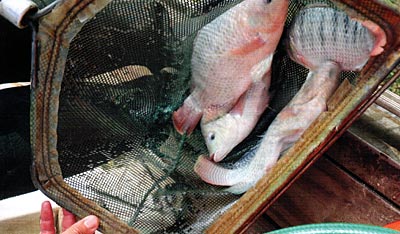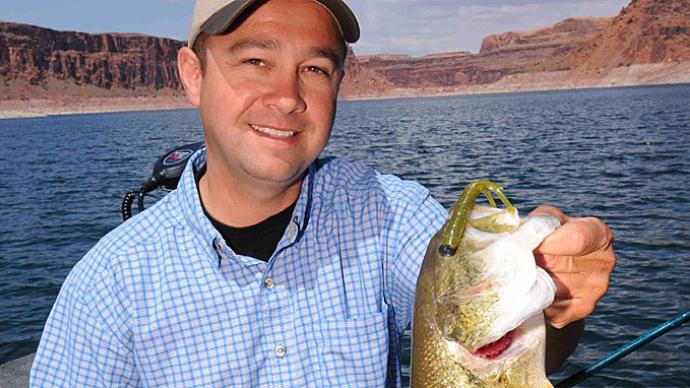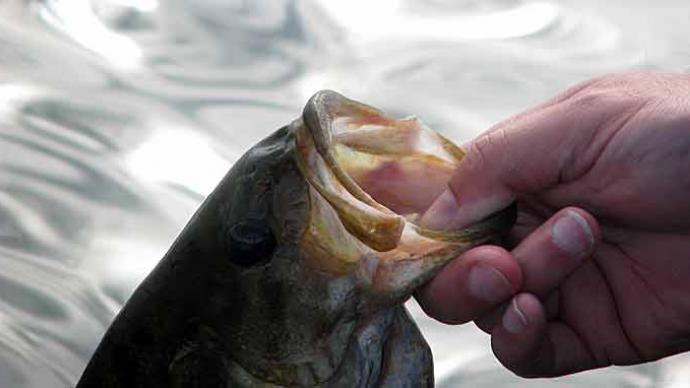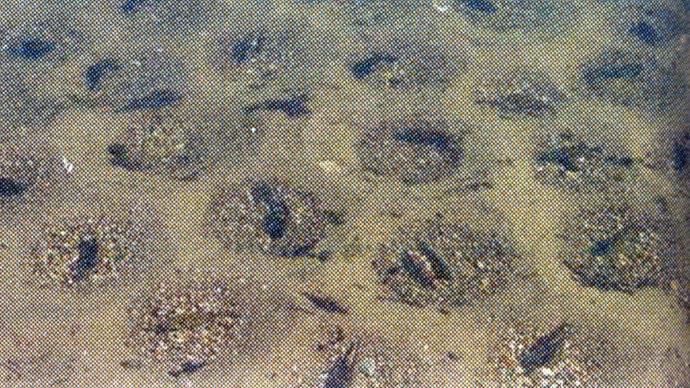
In this article, we look at some of the fascinating issues of spawning. What a roll of the dice or roulette wheel the spawn provides each year. The spawn may be a boom or a bust or somewhere in-between. So many factors directly affect the spawn and early survival.
The truth is, every one of these natural influences of spawning season can have profound effects on your pond. It is interesting, but also sometimes frustrating, because there is not a lot you can do to predict, much less preempt, possible problems.
You can do some things to help spawning, like adding proper habitat and structure such as bedding areas, or even decreasing those options if you want to reduce the spawning success of certain species of fish. However, even those are a gamble as to cause and effect. Many spawn disrupters are possible including weather, food (or lack of), competition, water quality, parasites, and other influences like too much or too little habitat.
Reproductive Repression of Largemouth Bass in a Heated Reservoir by Wilfred J. Dean and William H. Bailey, Proc. Annual Con£. S.E. Assoc. Fish & Wildlife Agencies 31:463- 470 provided a litany of causes. Many explanations have been offered. Water quality conditions such as high ammonia and carbon dioxide concentrations, high salinity, high or low pH, and excessive silt load have been shown to repress fish reproduction. Others reported insecticides and pesticides affect reproduction of certain fishes, as do some heavy metals and their salts. Parasite infestations have been shown to inhibit spawning and cause sterility in Largemouth bass and others found that Largemouth bass reproduction was also repressed in fish-crowded areas.
One type of spawning or early life suppression is where one species has a timing advantage. One species spawn earlier, having adapted to cool temperatures, and their fry eat the available food supply, leaving the young of the second spawning species to starve. An example of this is found in a study titled, Priority Effects Among Young-of-the-Year Fish: Reduced Growth of Bluegill Sunfish (Lepomis macrochirus) Caused by Yellow Perch (Perca flavescens)? by Mark A. Kaemingk, Jeffrey C. Jolley, David W. Willis and Steven R. Chipps in Freshwater Biology Jan. 2009.

This study found that Daphnia are often the preferred food by newly hatched yellow perch and bluegill sunfish because of the energy potential they provide. The study hypothesized that feeding by newly hatched yellow perch could lead to a large decline of Daphnia numbers. Yellow perch, because they hatch before bluegill, allow them to capitalize on Daphnia prior to the bluegill spawn/hatch. The study concluded that young yellow perch are capable of reducing Daphnia biomass prior to the arrival of baby bluegill, ultimately slowing bluegill growth. Thus, priority effects favor yellow perch when competing with bluegill for Daphnia. Because there are so many factors at work, spawn suppressing effects are sometimes minimized. In this case, if there is a shorter time between hatching of the two species (fast warm-up of water), higher Daphnia densities, or lower yellow perch densities, the effect may be different. Another factor could be unexpected weather. If, just after the yellow perch hatch, it becomes much colder and the Daphnia die off, the young yellow perch could starve, and then later when the bluegill hatch there could be an abundance of food as Daphnia replenish. The weather can, as we all know, be a true roll of the dice.
One of the more interesting aspects of spawning is the ability of some species to proactively reduce the spawning of other species. Some might call it natural selection—each species trying to increase its numbers at the expense of another species. Bluegill suppression of Largemouth bass spawning is an example. Early-on, fisheries scientists noticed that sometimes when there were lots of bluegill present, Largemouth bass would not spawn or the spawn was miniscule. This is but one example and this type of repression is also found among other species as well. What was this and how was it accomplished? Several theories were suggested and tested.
One study titled; Behavioral Suppression of Spawning in Largemouth Bass by Interspecific Competition for Space within Spawning Areas by Stephen Lee Smith in Transactions of the American Fisheries Society November 1976. examined the topic. In this study, it was noted that Florida Largemouth bass fail to spawn in association with dense populations of stunted sunfish. The study indicated that a physical factor rather than a chemical factor may be responsible.
In this study, three hatchery ponds containing marked Largemouth bass were stocked at different points in the reproductive cycle with concentrations of sunfish known to suppress spawning. It was determined that reduced or complete inhibition of spawning of Largemouth bass is related to interspecific population densities in the spawning area and is behavioral in nature. Suppression, linked to aggressive interaction with other species, primarily affects the male Largemouth bass, and is effective in suppressing the spawning behavior sequence even before nest construction. Essentially, if the daddy bass is busy fighting oppression and beating back all those pestering bluegills, he can't focus on reproduction.
Previous studies had examined if the suppression was caused by a chemical factor produced by bluegill, and that still appears as a possibility. Other works have reported the failure of Largemouth bass to spawn in the presence of large numbers of sunfish, and concluded that failure was due to either sunfish predation on the eggs or to a repressive hormonal or pheronmonal factor excreted by sunfishes, while others indicate that some other factor may be responsible.
Another suppression example is blue tilapia and Largemouth bass as exhibited in, Suppression of Largemouth Bass Production by Blue Tilapia in Ponds by Paul L. Shafland, and James M. Pestrak, in Proc. Annu. Conf. Southeast. Assoc. Fish and WildLife Agencies 37:441-446, 1983. Of particular note is the authors warning about whether additive effects exist in multi-species communities. That is the combined effect of multiple suppressor fish—bluegill and tilapia on Largemouth bass reproduction.
Largemouth bass reproduced successfully in small ponds with dense blue tilapia populations; however, mean production of hatchling Largemouth bass was 84% less than in ponds without tilapia. Suppression of Largemouth bass spawning success was attributed to behavioral interferences other than direct competition for nesting sites. These results suggest blue tilapia may aggravate Largemouth bass recruitment problems known to exist in some lakes in Florida. Biologists have sequentially considered the absence of suitable spawning sites, chemical repressive factors, and harassment of spawning Largemouth bass as the most likely causes. The above authors feel blue tilapia suppressed Largemouth bass production in a manner similar to the harassment by bluegill.
Keep in mind that suppression factors may act independently or synergistically (all combined and compounded) as a detriment to spawning. Oh well, so much spawn suppression and so little time before spring.
Wonder what the weather will bring.
Reprinted with permission from Pond Boss Magazine



